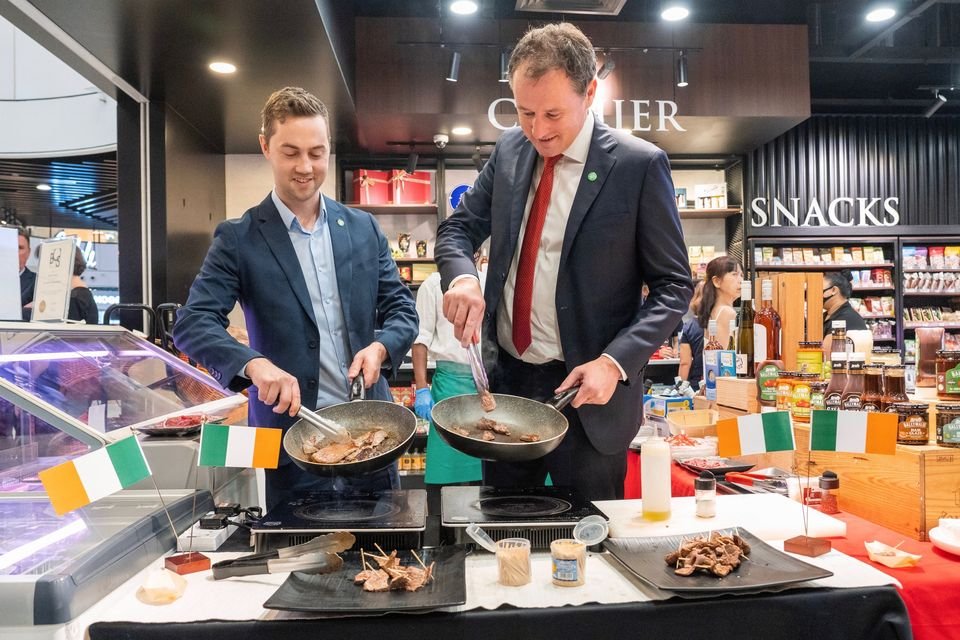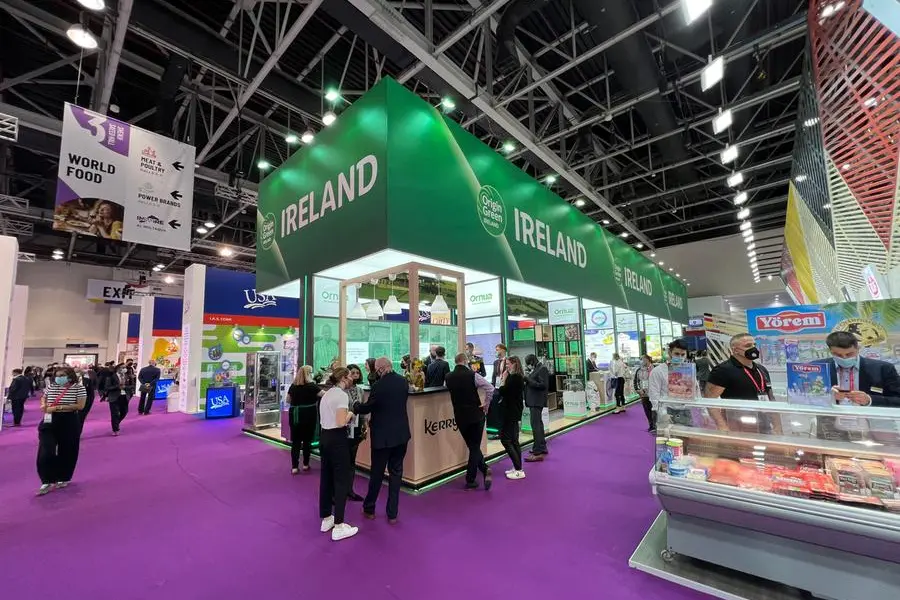Irish food exports to the Middle East and Africa reached a record-high $624 million in 2024. This is a major increase that shows how Irish food and drink producers are growing their presence in international markets. Exporters say that the growth will likely continue, with countries in both regions demanding more high-quality food and beverages from Ireland.
The Middle East and Africa are becoming more important for Irish companies, especially with changing global trade patterns and rising food needs in these areas.
Middle East and Africa Now a Key Market for Irish Products
In 2024, the Middle East and Africa accounted for 6% of Ireland’s total food and drink exports. Although Europe and North America remain the top markets, the sharp growth in this region has caught the attention of industry experts.

The growing population and rising incomes in countries like the UAE, Saudi Arabia, Egypt, Nigeria, and South Africa have created strong demand for premium, trusted food products—something Ireland is well known for.
Exporters are also benefiting from improved logistics, new trade agreements, and increased participation in regional food events and trade shows.

Key Export Products: Dairy, Meat, and Beverages Lead the Way
According to Bord Bia, the Irish Food Board, some of the most successful Irish exports to the region include:
- Dairy products such as butter, cheese, and milk powders
- Meat products, especially beef and lamb
- Alcoholic beverages, including whiskey and cream liqueurs
Dairy remained the top food export category in 2024, followed by beef. Ireland’s reputation for safe, high-quality, and traceable food gives it a strong advantage, especially in markets that value food safety and certification.
Irish whiskey, in particular, has been growing in popularity in cities like Dubai, Riyadh, and Cape Town, where there is a growing interest in premium and imported drinks.
UAE and Saudi Arabia Are Ireland’s Biggest Markets in the Region

The United Arab Emirates (UAE) and Saudi Arabia are the two largest buyers of Irish food in the Middle East. Together, they made up more than half of all Irish food exports to the region.
In the UAE, Irish butter and dairy products are widely available in supermarkets and used by top restaurants. Irish meat is also featured in many fine-dining menus.
In Saudi Arabia, dairy and meat exports have seen strong growth as the country works to improve food quality and variety in line with Vision 2030.
Other important markets include Qatar, Kuwait, South Africa, Nigeria, and Egypt, where changing diets and urban growth are driving interest in imported foods.
Government and Bord Bia Boost Irish Food Promotion Abroad
The Irish government and Bord Bia have increased their support for exporters through trade missions, brand-building campaigns, and participation in major food exhibitions such as Gulfood in Dubai.
In 2024, several Irish companies joined food and hospitality trade fairs across the region. These events helped connect Irish exporters with key buyers, distributors, and chefs, raising the profile of Irish food.
The “Origin Green” program, Ireland’s national food sustainability initiative, also helps build trust in the market by highlighting the environmental and quality standards behind Irish food production.
Exporters Positive About 2025 and Beyond
Many Irish exporters are confident that their sales in the Middle East and Africa will grow even further in the coming years. Several reasons support this outlook:
- Rising middle-class populations in cities across both regions
- Increasing demand for premium food and drink
- Expanding hotel, restaurant, and tourism sectors
- Growing awareness of Irish food brands
- Continued government support for international trade
Some exporters are even exploring halal-certified products, special packaging, and tailored marketing to better serve regional needs.
Case Study: Irish Dairy Producer Expands in the Gulf
One example of success is Ornua, the company behind Kerrygold butter. In 2024, it saw double-digit growth in Gulf markets and has opened new distribution partnerships to reach more consumers in the region.
“Consumers in the UAE and Saudi Arabia are looking for trustworthy food brands. They want products that are high-quality and sustainable, and that’s what Irish dairy stands for,” said a senior executive at Ornua.
Challenges Remain but Opportunities Outweigh Risks
While the growth is encouraging, exporters also face challenges such as:
- Price competition from other exporting countries
- Complex logistics and trade regulations in some African nations
- Adapting to different consumer tastes and dietary laws
Still, the overall outlook remains positive. Exporters believe that long-term investment in relationships and brand-building will continue to pay off.
Why Middle East and Africa Matter for Irish Food Exporters

The Middle East and Africa regions are not just large markets; they are fast-changing economies with younger populations, rising urbanisation, and growing demand for global food experiences.
For Irish exporters, these regions offer:
- Less dependency on traditional markets like the UK and EU
- Opportunities for value-added products like premium meats and drinks
- Strategic entry points for broader Asia and Africa expansion
By building trust and visibility in the Middle East and Africa, Irish companies are laying the foundation for long-term global success.
Conclusion: Irish Food’s Global Footprint Is Getting Bigger
In 2024, Irish food exports to the Middle East and Africa reaching $624 million proved that Ireland is becoming a trusted global supplier of top-quality food and beverages. With the right strategy, strong branding, and ongoing government support, this momentum is expected to grow in the coming years.
From dairy farms in County Kerry to restaurant tables in Dubai and Lagos, Irish food is making a mark—and the world is taking notice.














